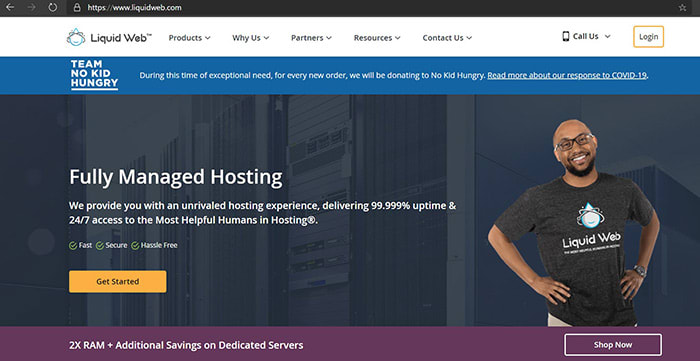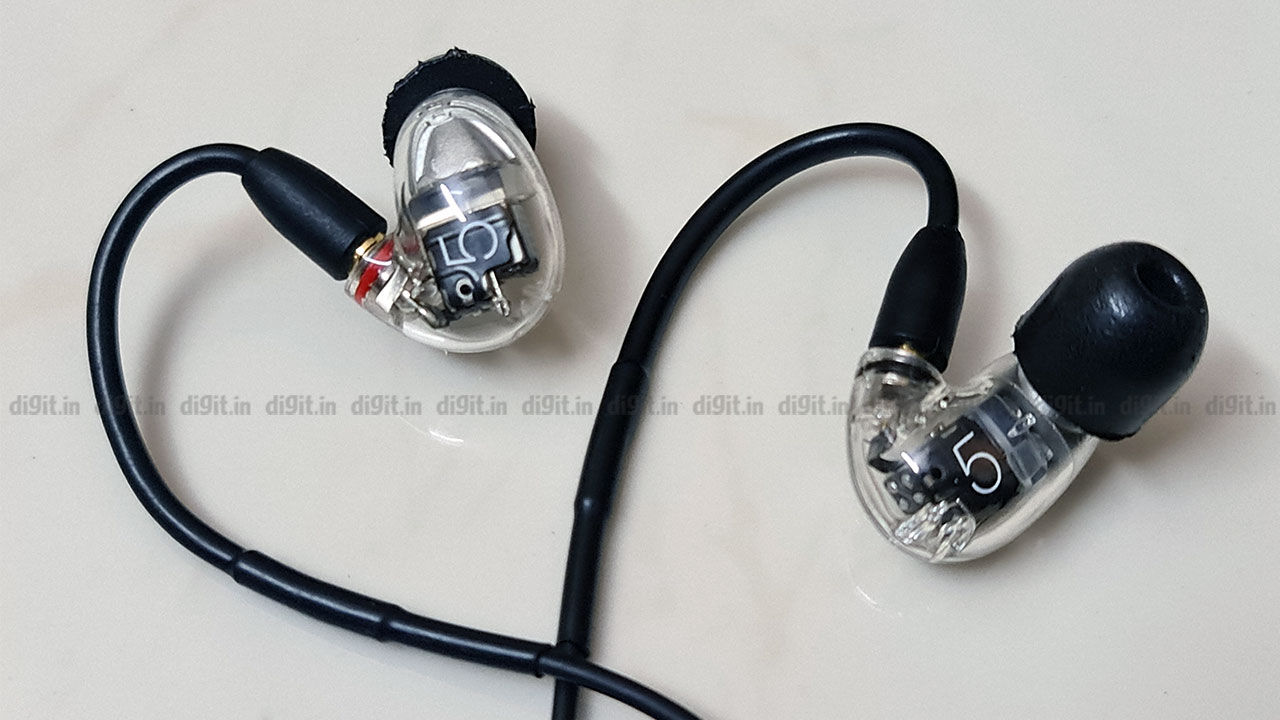
Have you ever wondered what a website domain is and how important it is to your business?
What differentiates a website domain from a website URL? What does the IP address of the server have to do with all that?
And in the end, how will a website domain help to bring more visitors to your site?
What is a Website Domain?
A domain name is a string that identifies a space within the Internet allocated to your website.
Since every website “lives” on some type of a server somewhere in the world, we need to have a specific way of accessing it, one way or another. Servers are another type of machine, and like any other machine, they don’t like working with words. They prefer numbers. At least one IP (Internet Protocol) address gets assigned to every server; this of this as the server’s address. If your website is the only website hosted on a web server, you could use the IP address to access it.
Take liquidweb.com for example. It’s definitely easier to say or remember than the IP address of the server it’s hosted on, which is 67.225.187.61.

Now try to imagine having to remember strings of numbers for every web page that comes to your mind. Difficult for a human, easy for a server.
Additionally, a single IP address can host multiple different websites. To access them, you’d need to remember extra identifiable information about each of those websites. It would be almost as if having to remember GPS coordinates for every location you’re trying to reach instead of knowing the street address it’s located on. It’s inconvenient, at the least. That’s where the website domain comes in.
But how are an IP address and a domain name connected?
What is a Domain Name System (DNS)?
A Domain Name System is a virtual directory for the Internet that connects domain names to IP addresses, thereby allowing browsers to load the domain successfully. The DNS also defines what a website domain should look like and what it consists of.

What Does a Website Domain Look Like?
Web browsers show the website’s URL in the address bar on top of the displayed website. The image above shows an example of a valid URL, split into 4 different sections:
- Protocol – In this case, this is a Hypertext Transfer Protocol Secure (HTTPS) , meaning it is a secure connection between the browser and the website.
- Subdomain – The “www” part of the URL can be used, but it’s not necessary for naming domains today. Originally, the “www” was used to distinguish a website from other potential elements of said domain. It was easily associated with the World Wide Web, so it represented the publicly accessible website, instead of other sections of the website, such as the help.liquidweb.com, in the case of Liquid Web.
- Second Level Domain (SLD) – This is the part that most are familiar with, and represents your business name digitally online. This is the part directly to the left of the dot com.
- Top Level Domain (TLD) – This is the ending to your URL, also known as the domain suffix.
Let’s take a look at sections 3 and 4 more closely, since the Second Level Domain and Top Level Domain are what truly make up a domain name.
What is a Second Level Domain?
Second level domains are the most important part of the URL, as that is the part visitors and customers will need to remember, so make sure it is memorable. This part represents your business online. The Second Level Domain is directly to the left of the domain suffix, also known as the top level domain.
How Do You Choose a Second Level Domain?
If you’ve ever thought about owning a website, you’ve most definitely thought about the second level domain. Choosing the best domain for your new business is a tricky process that requires brainstorming and some creative thinking.
Just like choosing the name for your new business in general, you will want your domain name (a combination of the SLD and TLD) to stand out among other competitors. You will want something professional, but also easy to remember, easy to say, and at least slightly original. Maybe catchy, too.
Additionally, for the most professional look, your website and email should use the same domain, and it should resemble the business name as closely as possible. If the actual business name is too long, abbreviations can be used as well.
The thing about domains is that you’d also need to check for the specific domain’s availability. The Internet has become a crowded place. Most of the simplest, self-explanatory domains are already taken, or up for sale, for exuberant prices. You can use tools such as Instant Domain Search to find which names are taken and which are available instantly.
What is a Top Level Domain (TLD)?
A Top Level Domain is the last portion of your domain after the period. There are many different types of top level domains to choose from, each having their own purpose.
What Types of Top Level Domains Can You Choose From?
There are quite a few different TLDs nowadays, including, but not limited to:
- .com – The most popular top level domain, initially intended for commercial websites
- .net – This TLD was created for network providers, but it’s open for other uses as well
- .gov – Used only by government offices, agencies, and agents. For example, an official website of the United States government is usa.gov
- .org – Mainly used by organizations
- .edu – Only educational institutions or universities can use this TLD
- .uk, .mx, .br – Country-coded TLDs (ccTLD)
- .music, .ninja, .store, .sports – These are some examples of newer, generic TLDs
How Do You Choose a Top Level Domain?
Newer TLDs can be more expensive than the traditional TLDs, such as “.net,” but the potential benefits for brand strengthening and market capture can outweigh the cost.
Use the following criteria to evaluate which Top Level Domain is right for you:
- Brand Strength – Owning your business’ URL on multiple TLDs across the Internet can increase name recognition in multiple markets, as well as strengthen the brand. In addition, you can prevent potential competitors from purchasing your business’ URL in combination with a new TLD. This works both for the traditional TLDs, as well as the newer ones.
- Controlling Your Vertical – If your business markets products or services in one particular vertical, such as sporting goods or music, you can capture more of that market by purchasing your domain name with the “.sports” or “.music” TLD.
How Do You Choose an SEO-Friendly Website Domain Name?
Search Engine Optimization (SEO) is a list of various tools and procedures that help make your website one of the first results when searching the web for a specific keyword on a search engine such as Google or Bing. One of the things that can help with SEO is the choice of a domain name as well.
Keep the following in mind for an SEO-friendly domain name:
- Keep It Short – the shorter the domain name is, usually, the easier to remember, type, or search. If you’re using social media, it’s less likely to get additionally shortened when mentioned.
- Intuitive or Brandable – Your domain name should be able to give an idea of what your site is about at-a-glance.
- Append the Name – If a domain name you’ve decided on is not available, it’s okay to add a suffix or a prefix to it such as toysonline.com or, toysonline.eu.
- “.com” or not? – “.com” is still used with the majority of websites online these days. Search engines don’t necessarily have a preference for this specific TDL, but the general population seems to “trust” sites that use “.com” more. If the “.com” TLD is not available for your chosen Second Level Domain, “.net”, or “.org” could be valid choices as well. If those aren’t available, the next best option would be choosing an appropriate ccTDL.
- Careful About Trademarks – Make sure your domain name cannot be confused with another brand, especially in your vertical, as that company can later take legal action against you.
How Do You Obtain a Website Domain Name?
Once you’ve reached a decision about the business name and potential domain names you’d like to use, it’s time to purchase a domain from one of the many domain name registrars, including Liquid Web.
Usually, to keep everything simpler, you will want to choose your web hosting provider as your domain registrar as well. They’ll be able to assist you with any potential issues or questions regarding both.
You can purchase domain name registrations for different periods (usually annually). Depending on the domain name, or the TLD, their prices can vary from free domains to those costing a couple of hundreds of dollars per year.
Choosing Your Business Website Domain Name
Choosing a correct domain for your business is obviously important, just like a good location for your physical storefront would be. You’d want to make sure that your neighbors are people you can work with, or that the banners you’d be using aren’t misleading. It’s the first impression your visitors and potential customers will get on the web.
Just like your website should be made in a professional way, either by professionals or using a professional website builder, the domain should reflect what’s happening behind the scenes effectively. In the end, your unique and clever domain name may make the visitor choose you over your competitors.
Learn 4 Ways a Great Brand Name Will Boost Your Business Success
[ad_2]
Source link






